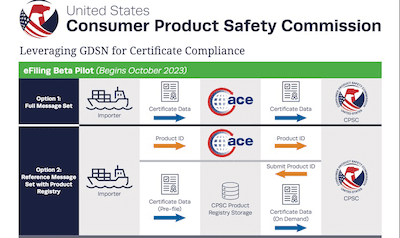Brand Protection for Serious Sellers
Most Amazon sellers I have dealt with over the last thirteen years contact me to fix an issue with a test report, rejection of a certificate, or supporting documentation or to identify regulations needed to develop and launch a new product. When I ask them if they have a compliance program, they only admit to having what Amazon requires to list their product, and only a few are interested in learning more. I am amazed that with the money they pay for search optimization, consultants, listing upgrades, etc., they are not interested in investing in a program that ensures that they maintain and protect their business and want to keep growing. Today more than ever, with factories selling against them in the same marketplace, sellers need to show “Due Care” to protect themselves against false claims and, more importantly, selling non-compliant products.
A robust consumer product safety compliance program is essential for Amazon sellers due to several reasons:
Legal Requirements: Compliance with consumer product safety regulations is mandatory for Amazon and major retailers. These regulations protect consumers from unsafe products that can cause harm or injury. By implementing a compliance program, Amazon sellers can ensure that their products meet all applicable safety standards and regulations, reducing the risk of legal penalties, fines, or even product recalls.
Customer Trust and Reputation: Maintaining customer trust is crucial for any business, including Amazon sellers. By prioritizing consumer product safety, sellers demonstrate their commitment to providing safe and reliable products. This builds customer trust and helps establish a positive reputation, leading to repeat purchases and positive reviews.
Risk Mitigation: Implementing a comprehensive compliance program helps sellers identify and mitigate potential risks associated with their products. By conducting thorough product testing, quality control checks, and risk assessments, sellers can identify and address any safety concerns before their products reach consumers. This proactive approach minimizes the risk of accidents, injuries, or negative incidents associated with product safety. While very important, very few sellers implement more than the minimum required to get their product listed.
Liability Reduction: A well-implemented compliance program can help mitigate potential liability for Amazon sellers if a product-related incident occurs. By having processes to demonstrate due diligence, such as keeping records of safety testing, certifications, and compliance documentation, sellers can better defend themselves against legal claims, and requests from the CPSC, or retailers and show that they have taken necessary precautions during the development and manufacture of their products.
Marketplace Requirements: Amazon has policies and guidelines that sellers must adhere to. Each new marketplace you enter may require or impose additional strict requirements related to product safety, quality, and compliance. Failing to meet these requirements can result in penalties, listing suspensions, or account suspensions. With a compliance program, sellers can ensure that they meet Amazon’s standards and, more importantly, regulatory requirements to avoid negative consequences.
Global Market Access: Many Amazon sellers operate in international marketplaces, which may have unique product safety regulations. Implementing a compliance program enables sellers to navigate the complexities of different regulatory frameworks and expand their business globally. It helps ensure that products meet the safety requirements of various countries, allowing sellers to access a broader customer base without facing regulatory barriers.
A consumer product safety compliance program is crucial for Amazon sellers to fulfill legal obligations, maintain customer trust, mitigate risks, reduce liability, comply with marketplace requirements, and access global markets. By prioritizing product safety, sellers can protect their customers, brand reputation, and business interests.
A consumer product safety compliance program typically consists of several key elements:
1. Appointment of a compliance manager to handle all compliance-related items and serve as a go-to person for escalating any quality or safety issues.
2. Regulatory Knowledge: Stay informed about the applicable consumer product safety regulations and standards in the regions where you sell your products. This includes understanding the specific requirements for labeling, packaging, product materials, testing, certification, and reporting.
3. Risk Assessment: Conduct a thorough risk assessment of your products to identify potential hazards, assess their severity, and determine the likelihood of occurrence. This involves considering factors such as product design, manufacturing processes, materials used, and potential consumer misuse or abuse.
4. Product Testing and Certification: Ensure your products undergo appropriate testing by CPSC-accredited laboratories to verify compliance with safety standards and regulations. This may include testing for physical safety, electrical safety, chemical content, flammability, and other relevant parameters. Obtain necessary certifications or marks to demonstrate compliance.
5. Supplier Due Diligence: Implement a process to evaluate and select reliable suppliers prioritizing product safety. Verify that your suppliers adhere to quality management systems and comply with applicable safety regulations. Maintain clear communication with suppliers to address any safety concerns promptly. If you want to sell to major retailers, this step is critical.
6. Quality Control Processes: Establish robust quality control procedures to monitor your products’ manufacturing, packaging, and labeling. Regularly conduct inspections to ensure that products meet safety and quality standards and that any identified issues are addressed promptly. Tailor your inspection protocols to your product, not to the category, making sure you look for items previously brought up in reviews or customer feedback.
7. Incident Reporting and Response: Implement a system to track and report any incidents or safety concerns related to your products. Develop a protocol and intake form for addressing customer complaints, conducting investigations, implementing corrective actions, and escalating issues when necessary.
8. Documentation and Record Keeping with Comply PRO+ Maintain thorough documentation related to product safety, including test reports, certifications, compliance documentation, supplier agreements, audits, certificates, and any relevant correspondence. Keep accurate records of product testing, Batch tracking, inspections, and other compliance-related activities.
9. Training and Awareness: Provide comprehensive training to your employees and suppliers regarding product safety requirements, best practices, and the importance of compliance. Foster a culture of safety awareness throughout your organization.
10. Continuous Improvement: Regularly review and update your compliance program to adapt to evolving regulations and industry best practices. Stay updated on product safety alerts, recalls, and emerging safety issues to proactively address potential risks. Use your quality program data to identify and fix issues identified during production and reported in bad reviews to upgrade your product over time.
11. Compliance Audits: Conduct periodic internal audits to assess the effectiveness of your compliance program. Identify any gaps or areas for improvement and take corrective actions as needed.
By incorporating all of the elements listed above into a consumer product safety compliance program using the Comply PRO+ framework, Amazon sellers can establish a robust program to sell globally, ensure the safety and compliance of their products, protect consumers, mitigate potential risks, and protect their brands.
Contact us today for a demo so we can show you how easy it is to protect your brand you worked so hard to build!

 2023
2023
